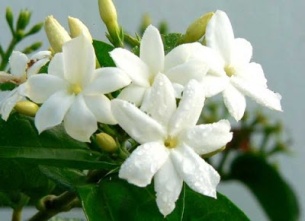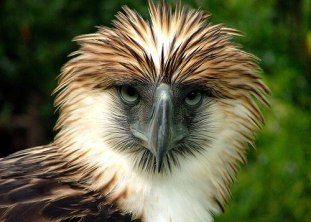Let’s learn the national symbols of the Philippines. Yay.
National Flower:
The national flower of the Philippines is the Sampaguita. It’s mostly adorned for its simplicity and scent. If you smell it….. you’ll be amazed. This flower symbolizes purity, simplicity, and humility. When you have the chance to spot it, you will notice that it’s petals are all white and it really does look simple (yet surprisingly gorgeous). Also, as a fun fact, this flower was declared the Philippines national flower by Governor-General Frank Murphy (an American) in 1934.
If you smell it….. you’ll be amazed. This flower symbolizes purity, simplicity, and humility. When you have the chance to spot it, you will notice that it’s petals are all white and it really does look simple (yet surprisingly gorgeous). Also, as a fun fact, this flower was declared the Philippines national flower by Governor-General Frank Murphy (an American) in 1934.
Name check:
Common Filipino Name:
Sampaguita
Common English Name:
Arabian Jasmine
Asian Jasmine
Asiatic Jasmine
Sacred Jasmine
Sambac Jasmine
Batonic name:
Jasminum Sambac
National Bird:
The national bird of the Philippines is the Philippine eagle. I personally find this bird very stunning. Do you like eagles [I do ~_~]?  On July 4, 1995, under the proclamation No. 615, the 12th president of the Philippines, Fidel V. Ramos, declared the Philippine eagle the Philippines national bird. And, the reason to why this bird was “the chosen one” was because of its size and rarity. Let’s emphasize the rarity a little because you should know that the national bird of the Philippines is critically endangered!
On July 4, 1995, under the proclamation No. 615, the 12th president of the Philippines, Fidel V. Ramos, declared the Philippine eagle the Philippines national bird. And, the reason to why this bird was “the chosen one” was because of its size and rarity. Let’s emphasize the rarity a little because you should know that the national bird of the Philippines is critically endangered!
Just 2 questions that are popping in my head:
Why wouldn’t they choose the Philippine Maya bird which seems to be commonly found in the Philippines? What happens if don’t have the power to properly take care of our national bird (which is critically endangered)!?
National Animal:
CARABAOOOOOOOOOO.
The national animal is the carabao. If it wasn’t that obvious with my random outbursts up there, the carabao is the national animal of the Philippines. Until this day, the carabao is still being very helpful in the rice fields. I had an opportunity once to ride one. It was so cooool. Anyways, the carabao symbolizes strength, power, efficiency, perseverance, and most of all, hardwork.
National Tree:
I love trees.
The national tree of the Philippines is called Nara. It was declared and given the honor of becoming the Philippines national tree on February 1, 1934, by Governor-General Frank Murphy, too. Remember I mentioned above that Governor-General Frank Murphy was an American (just a trivia). And, while you will need a permit to cut down this tree (with many other types of trees), here are a few uses that the Narra tree is used and could be used for:
- Decorations
- Furniture Projects
- (And, apparently) keys
- Shade ~_^ (You know…. when it gets hot)
The uses of the (Narra) tree’s flower is:
- Honey source
The use of the (Narra) tree’s leaves is:
- Shampoo
- Waxing
- Polish Brass and Copper
National Language:
The national language of the Philippines is Tagalog and Filipino. According to Rappler, Filipino was declared the Philippines’ national language when the President, Manuel L. Quezon, spoke on air using this language with Executive Order No. 134 issued on December 30, 1937. So, this became the national language nearly eighty years ago. If we run through time and go from 1937 to 2012, the president, Benigno Aquino III, addressed the nation in Filipino. If you are interested in checking out the video, which was posted on youtube, you could search up this link
https://www.youtube.com/watch?v=5odo4Szfwgw
National Fish:
This is an unofficial national symbol of the Philippines but I just wanted to let you guys know the national fish.
It is Bangus. If you’ve eaten this before…… you’ll know that it has the best taste a fish could have. This isn’t an official national symbol because it hasn’t been through law or declaration.
National flag:
White. Red. Blue. Sun. Stars.
This flag represents liberty, equality, and fraternity. According to the wiki, the blue stripe on the flag stands for peace, truth, and justice(!); the red stripe on the flag stands for patriotism and valor. Unity, freedom, people’s democracy, and sovereignty are what the golden sun at the center of the white triangle stands for. The three stars that go around the golden stars are supposedly the representation of the 3 MAJOR islands where the beginning of the revolution began. The three main islands are Luzon, Visayas, and Mindanao. There are so many words describing just the colors and shapes than what meets the eye (hopefully that makes sense).
The original proclamation explains the meaning of the flag in the following:
And finally it was resolved unanimously that this Nation, already independent from today should use the same flag which it has used, whose shape and colors are described in the attached drawing rendering realistically the three aforementioned forces representing the white triangle as the distinctive symbol of the famed Society of the Katipunan, which through the blood compact impelled the masses to rise in revolt; the three stars representing the three principal islands of this Archipelago — Luzon, Mindanao, and Panay (Visayas) in which the revolutionary movement broke out; the sun indicating the gigantic steps taken by the children of this country on the road to progress and civilization; the eight rays symbolizing the eight provinces of the Philippines,[a] and the colors of blue, red and white commemorating the flag of the United States of North America as a manifestation of our profound gratitude towards this Great Nation for its disinterested protection which it lends us, and continues to lend us. And, carrying this flag, I unfurl it before the gentlemen assembled here—[List of names of the delegates]—and we all solemnly swear to acknowledge and defend it to the last drop of our blood.
National anthem:
The Philippines national anthem is called Lupang Hinirang. The English translation of Lupang Hinirang is Chosen Land. Beautiful. The whole anthem (which I got from the wiki) will be down below just in case you would like to learn it, memorize it or sing it.
Bayang magiliw, perlas ng silanganan.
Alab ng puso, sa dibdib mo’y buhay.
Lupang hinirang, duyan ka ng magiting
Sa manlulupig, di ka pasisiil.Sa dagat at bundok, sa simoy at
sa langit mong bughaw,
may dilag ang tula at awit
sa paglayang minamahal.Ang kislap ng watawat mo’y
tagumpay na nagniningning.
Ang bituin at araw niya
kailan pa may di magdidilim.Lupa ng araw, ng lualhati’t pagsinta,
buhay ay langit sa piling mo.
Aming ligaya na pag may mang-aapi,
ang mamatay ng dahil sa iyo.
The english version of this anthem is:
Land of the morning
Child of the sun returning
With fervor burning
Thee do our souls adore.Land dear and holy,
Cradle of noble heroes,
Ne’er shall invaders
Trample thy sacred shores.Ever within thy skies and through thy clouds
And o’er thy hills and seas;
Do we behold thy radiance, feel the throb
Of glorious liberty.Thy banner dear to all hearts
Its sun and stars alright,
Oh, never shall its shining fields
Be dimmed by tyrants might.
So those are a mix of some of the official and unofficial national symbols of the Philippines. I really enjoyed writing about this because it opened up some much more information and facts that I’ve never known. I used to look at the Philippine flag and nothing would really come to me but researching and learning what it really means that every inch of that flag and all the colors mean different things has really change my perspective. I hope that what you’ve learned today has interested you.
Yours truly,
L.O.A.S.H

You must be logged in to post a comment.